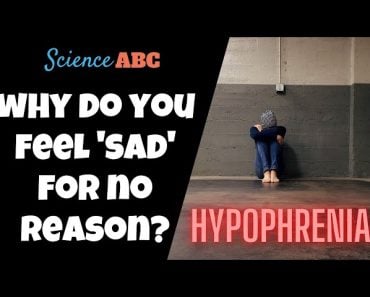Table of Contents (click to expand)
The answer to this question is not black or white. When a person inherits a gene(s) linked to a disorder (when a disorder “runs in the family”), that person is predisposed or vulnerable to developing that mental disorder. However, external factors play a role in exacerbating the predisposition or not.
There has been a long-standing debate on whether mental disorders are inherited or if they are the result of one’s environment. For instance, when we hear the chilling impact of depression on a person’s mood, motivation, and sometimes even their suicidality, it raises a concern within us to seek answers. Were our brains just “born this way” or did something go terribly wrong during the course of life?
The answer, however, is not black or white; there are infinite grey areas when it comes to the study of the mind.

While it is relatively easy to pinpoint the exact genetic causes of several physical disorders, such as Type-1 diabetes, Down syndrome, and even cancer, to some extent, the lines blur when it comes to mental disorders.
Heritability is a measure or estimate that tells us how differences in people’s genetic composition can account for the different traits they have. For instance, the different eye color people have can be explained by the genes they’ve inherited from their parents (or their family tree). It is known that the heritability of mental disorders can range from 40% when it comes to depression to around 80% for schizophrenia. It is important to note that these estimates are subject to change from one population to another.
However, no single gene is the cause here. Multiple genes with a whole range of functions in the brain and body play a role in causing these disorders. The environment can also influence how these genes function, which ultimately helps us determine the overall risk of someone developing the disorder.
This interaction of genetic components with environmental factors is explained with the help of the diathesis-stress model. The model suggests that mental disorders are caused by a combination of one’s genetic predisposition and their experience of stress. This model is also known as the vulnerability-stress model.
Recommended Video for you:
What Is Meant By Diathesis And Stress?
When a person inherits a gene(s) linked to a disorder (when a disorder “runs in the family”), that person is predisposed or vulnerable to developing that mental disorder. This genetic predisposition can be further affected by other factors, such as a family member being diagnosed with the same mental illness, prenatal experiences, for example, when women smoke or drink during pregnancy, or are infected by flu during pregnancy, all of which cause harm to the developing fetus.
Stress refers to environmental factors that may trigger the manifestation of mental disorders, or it can worsen pre-existing conditions. Types of stress generally include major life changes, traumatic events, such as the loss of a loved one, or even everyday hassles.
An important aspect to remember is that not everyone with a genetic vulnerability to a mental disorder will go on to develop it, just as everyone who experiences stress or trauma does not develop mental disorders. The model helps in explaining why some people are more likely to develop a mental illness than others.

What Does Research Say About Mental Disorders And Their Links To Diathesis And Stress?
The diathesis-stress model helps explain the development of several kinds of mental disorders, including depression, anxiety disorders, schizophrenia, and eating disorders. The most researched area, however, is schizophrenia. Research has found that individuals who are at a genetic risk for dopamine dysfunctions or have abnormalities in the way their dopamine receptors act are more likely to develop a psychotic disorder if faced with stressful conditions.

The activity of the dopamine system can influence how much attention a person pays to both internal and external events. Dysregulated dopamine transmission can lead to paying more attention to and attaching more importance to stimuli that are not relevant. This is referred to as “aberrant salience.”
This helps explain why people may develop delusions or experience hallucinations, as they almost always report high levels of sensory awareness (“My senses were heightened. I developed a fascination with the seemingly insignificant details around me.”) or report an increased significance of the events around them (“I felt that this situation had an overwhelming importance”).
These individuals struggle to make sense of experiences that were previously in the background, but have now (seemingly) become extremely important. For example, they may perceive the white noise hum of a refrigerator as a voice speaking to them, or they may think that a package arriving at an inopportune time is a threat.
When people who already have abnormalities in dopamine neurotransmission face stressful events or traumatic events, it can lead to an increase in their cortisol levels. Research has shown that high cortisol levels trigger more abnormalities in the way dopamine behaves in the brain and can result in the onset of the illness.
Conclusion
The diathesis-stress model is one of the most influential models when it comes to understanding mental health disorders. It has helped academics and researchers get past the view of mental disorders as either emerging from nature or nurture, and instead see how both biological and environmental factors interact to cause these disorders.
The model has also influenced the approach to treating mental illnesses by focusing on reducing stressors as much as possible, especially for people who are already vulnerable. This model has reduced the dependence on medication as the sole treatment of diseases like schizophrenia and encourages approaches that incorporate mindfulness and holistic management.
References (click to expand)
- Fowler D., Garety P.,& Kuipers E. (1995). Cognitive Behaviour Therapy for Psychosis: Theory and Practice. John Wiley & Sons
- (1988) The current status of the dopamine hypothesis of schizophrenia.. The American Psychological Association
- Arnau-Soler, A., Adams, M. J., Clarke, T.-K., MacIntyre, D. J., Milburn, K., Navrady, L., … Major Depressive Disorder Working Group of the Psychiatric Genomics Consortium. (2019, January 18). A validation of the diathesis-stress model for depression in Generation Scotland. Translational Psychiatry. Springer Science and Business Media LLC.
- Wender, P. H. (1974, January 1). Crossfostering. Archives of General Psychiatry. American Medical Association (AMA).












